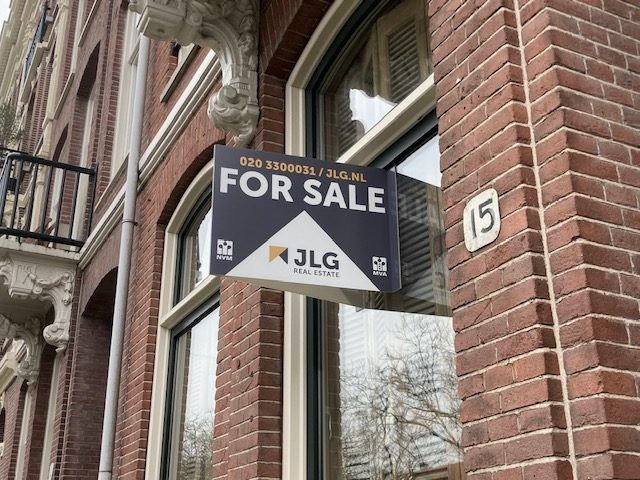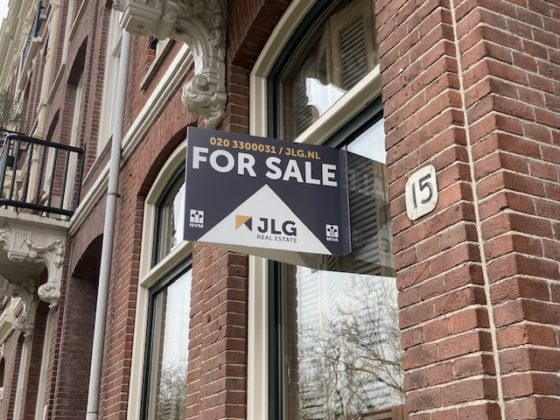House prices in the Netherlands drop 6% year on year: NVM


House prices in the Netherlands have dropped year-on-year for the first time in nine years, according to estate agent association NVM.
The change marks a rapid shift in the market, after mortgage rates more than tripled last year and European economies head into predicted mild recession.
Lana Goutsmits-Gerssen, head of the NVM housing team, said there was some good news for house buyers. ‘The extremely overheated housing market seems to be behind us,’ she said at a press conference on Thursday.
According to NVM figures, based on median house sale agreements arranged by its 4,440 members, the typical house cost €407,000 from October to December last year.
This was a drop of 6.4% on the same period a year earlier, and a 3.7% drop on prices between July and September. Between the second and third quarter of 2022, the NVM measured a price fall of almost 6%. Official land registry figures, which are more complete and based on actual transfer prices, currently show slowing annual growth and four successive months of house price falls.
‘There were more than double the number of houses for sale than there were last year, almost 35,000 nationally,’ said Goutsmits-Gerssen. ‘One in five houses is on sale for six months, and before it was one in 11. The amount of choice for buyers has increased…We are seeing a more balanced housing market.’
According to NVM calculations, a typical buyer now has a choice of three houses compared with just over one, a year ago. However, estate agents stress that there is still a national housing shortage and claim that in a ‘healthy’ market, each buyer has a choice of five houses.
Regional drops
The largest price drops were visible in the greater Amsterdam region, IJmond and Haarlem, where year-on-year prices fell by 9%. The typical home in The Hague and in Utrecht sold for around 7% less at the end of 2022 than at the end of 2021. There were annual increases in parts of Zeeland, Zuid-Limburg and Twente.
Jerry Wijnen, chair of the Amsterdam estate agents association, MVA, said that the drop in the Dutch capital was a ‘small correction’ on large annual price increases in recent years.
It is unclear how a new bidding log book that agents have to keep, increased stamp duty for buy-to-let and new proposals to regulate more rental houses will affect the house sale market. If buy-to-let private renters sell their properties, Goutsmits-Gerssen pointed out, there might be more for sale but less to rent.
The NVM does not predict a large-scale crisis with home-owners in negative equity, since people own a larger proportion of their own homes than during the last credit crisis, and many fixed their mortgages when rates were at historic lows.
New-build concerns
However, the NVM has serious concerns about whether the country can build 900,000 houses by 2030, with a marked drop in sales of relatively expensive, new-build houses already visible. Head of new builds, Chris van Zantwijk said the high costs of planning permission, land, energy-efficient building and inflated prices for building materials, meant developers are postponing or even cancelling projects.
Sales have fallen most steeply for new build houses, which have a typical price of €498,000 and cost €4,347 per square metre – compared with €3,780 per square metre for older buildings.
There were 46% fewer new build sales than a year ago, thanks to increased mortgage interest rates, inflation and uncertainty amongst home owners about selling their current homes.
‘There are a huge amount of rules which makes it difficult to realise new build, and we see this in the asking prices,’ said Van Zantwijk. ‘Before they even break ground, developers have a lot of costs. Developers are ever more cautious…We are really questioning whether new build will remain achievable, scalable and affordable.’
He suggested that a lower value added tax rate for developers could be one solution, as well as better agreements with local councils around procedures and rules.
The NVM figures are considered a bellwether of what is currently happening in the housing market, although they do not include all sales. Trends are typically reflected in the complete land registry and CBS point-of-sale house prices several months later. The CBS uses average house values rather than the median point (where half of sales are above this point and half are below).
Thank you for donating to DutchNews.nl.
We could not provide the Dutch News service, and keep it free of charge, without the generous support of our readers. Your donations allow us to report on issues you tell us matter, and provide you with a summary of the most important Dutch news each day.
Make a donation